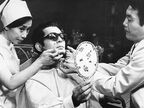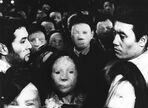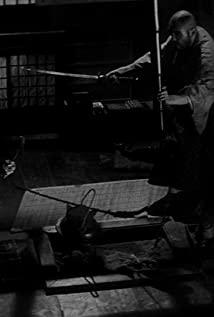I don't know if the large number of ID photos listed in the title is terrifying.
The actor in the fake (film) puts on a mask to play a faceless person hidden behind a face. The director uses a perspective lens that is invisible to the human eye at first to show that he will use the mask in the mask in the fake to play the real behind the fake. On the virtual image platform of the movie, the empty space around the neck is used to eat away the virtual image. The actor hides his face to present a blank in the world of appearances (no face, absence of symbols), and then it becomes a threat to turn off all the lights in the world, goug out all the eyes of all people, and lure all virtual images into that one. The hole in the world distinguished by light and color symbols - maybe this is just a perfunctory brain supplement, it seems that there is no such ambition but an open question.
In the modern age where people don't have the patience to spend a few more seconds to understand the inner substance beneath the skin, the face provides a platform for rapid exchange of information, which is an instant projection of the world of face viewing and sculpture, performance and shaping.
The film says that appearances infringe upon the inner man, and after finally succumbing to the mask, he says that he, who has no face, is just a stranger to you. The mask surging from the crowd, the deep sea surging under the mask. Their self-identity is thus blurred. In the end, Nissan's body that exposed flesh and blood probably showed that her sister's true emotions broke her face after she sank into the deep sea, and she was an animal whose fate was dominated by her face, right?
View more about The Face of Another reviews











